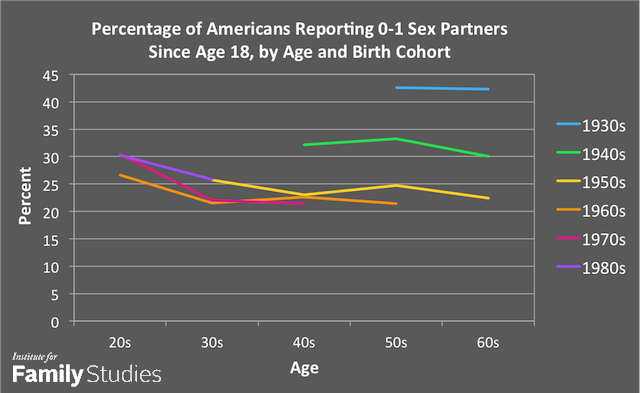Highlights
Last week, a tabloid newspaper accused a prominent politician of a series of extramarital affairs. The report may or may not be true. But the dalliances of elected officials on both sides of the political aisle—from then-Governor Mark Sanford (R-SC) to then-Governor Eliot Spitzer (D-NY)—raise an important question: Why does monogamy prove so difficult for so many?
And if it doesn’t come naturally to humans, why do so many modern societies insist on it anyway?
Biologist and evolutionary psychologist David P. Barash seeks to answer questions like these in his new book Out of Eden. It is at once a good introduction to the topic of human sexuality and a useful corrective for those who have read alternative accounts of the topic, most notably the engaging but dubious 2010 book Sex at Dawn. Perhaps most important, the science explained here holds many implications for modern America, where monogamy is losing ground to instincts with much deeper roots in human history.
***
For sexually reproducing species, much of importance can be traced to a single fact: sperm are far more plentiful than eggs. A male can father an almost unlimited number of children if he can get enough females to participate. A female, by contrast, can max out her reproductive capacity even with a single lifelong partner.
By itself, this doesn’t mandate “polygyny,” the form of polygamy in which males but not females are allowed multiple partners. Monogamy does exist in nature, as, of course, do females who seek out multiple partners. But nature does seem to push things in the direction of polygyny on our branch of the evolutionary tree.
Among mammals, just 9 percent of species are monogamous; among primates, just 29 percent are. Humans are a diverse lot, but before Western imperialism, 83 percent of indigenous societies were polygynous, 16 percent monogamous, and 1 percent polyandrous (where women have multiple husbands).
What’s interesting, and frustrating for those looking for clean answers, is that these categories aren’t as exclusive as they seem. Polygynous human societies are only preferentially so: Many men still acquire only one wife, and Barash writes that such pairings were probably the most common throughout human history. Monogamous societies, of course, always have their share of philandering and “serial monogamy,” too. And there may have been a significant shift from polygyny toward monogamy beginning about five thousand to ten thousand years ago, judging by genetic evidence. Some kings and warlords aside, ours is a case of moderate polygyny; we’re not elephant seals, whose harems often number up to 40.
Our polygynous past is very much with us, though, and not just in the contemporary societies that still allow men to have multiple wives: It seems to be built into our very bodies. In nature, species with the strongest polygynous inclinations—those whose males build the biggest harems—also tend to have the most exaggerated sexual dimorphism. There is a violent, high-stakes competition for females within these species, so males evolve to be bigger, stronger, and more aggressive. Indeed, human males are moderately taller, heavier, and more muscular than females, and it’s males who commit the overwhelming majority of human violence.
Polygamous roots are further evident in our sexual “bimaturism.” Among polygynous species, males reach puberty later than females, because in such a violent sexual market, it is unwise to begin competing before one is big and strong enough. Again, this is exactly what we see in humans.
But what about women? Again, polyandry is exceedingly rare as a mating system. Importantly, though, polyandry can exist in some form even when it’s not socially recognized. In humans and numerous other species, females who are officially tied to one partner may have others in secret, the secrecy being necessary to prevent not only social sanctions but also violence and abandonment on the part of males.
There are numerous potential advantages to this behavior, even though (as noted above) it won’t necessarily increase the number of children a female bears. Through adultery, a female might get more resources or higher-quality genes than her partner can provide, for example.
Polygyny plus (a form of) polyandry: That adds up to polyamory, right? Party on!
Well, no. Humans probably didn’t evolve in the sort of peaceful, bonobo-style sexual free-for-all imagined in Sex at Dawn. Promiscuous species like bonobos (and the much more violent chimps) engage in a lot of “sperm competition,” because multiple males frequently mate with the same fertile female. Thus they evolve toward that end, with large testicles, anatomical equipment designed to remove rival males’ semen, and sperm cells designed to do battle with competitors inside the female body.
Humans may have some of these traits—for example, see an intriguing theory about the shape of the male appendage—and we are closely related to both bonobos and chimps, as argued in Sex at Dawn and conceded in Out of Eden. But we simply don’t have these features to anything like the degree those relatives of ours do. When it comes to sperm competition, the evidence is more consistent with the covert polyandry described above than with the flagrant promiscuity of Sex at Dawn.
What’s more, sexual jealousy appears to be a human universal, seen nearly everywhere to some extent. It’s not an arbitrary cultural construct, as argued in Sex at Dawn. The fact of human paternal investment also argues against polyamory. In promiscuous species, fathers rarely invest in their children, instead focusing on impregnating more females, which is a more certain bet because they don’t know which children are theirs anyway.
***
This hints at something modern humans are increasingly having to confront: If we’re not naturally inclined toward monogamy, why force the issue? What do we gain?
It’s odd that so much of the world has adopted this custom if it’s in tension with human nature. Sorting out why that happened is key to figuring out whether it should continue. Here we don’t know the answers with scientific certainty, but Barash provides numerous reasons that cultures could have “evolved” to support monogamy, and they double as reasons to preserve it.
One is just math: Males and females are roughly equal in number, so if one male monopolizes multiple females, society will have to deal with the “excess” males somehow. Otherwise, the result is violent competition over harems. Monogamy, by contrast, ensures that mates are available for nearly all men. Incidentally, this is probably the most compelling argument as to why a society that recognizes gay marriage need not also recognize polygamy.
Joint parenting is another reason monogamy may have developed, especially given that human children are so helpless in their early years. The evidence is clear, cross-culturally as well as within modern societies, that human children benefit from the help of adults besides their mothers. This doesn’t always mean dads; “alloparenting” by grandparents and other adults from the community, sometimes even unrelated males (though this may bring a heightened risk of abuse or infanticide), helps, too. But all else equal, father involvement helps kids survive and succeed, and monogamy aids this investment by ensuring that men know which children are theirs and that each mother has full access to the resources and attention of her children’s father.
Interestingly, there’s some evidence that human sexual relationships develop on a timeline that ensures kids at least get off to a good start before their parents split up, and sexual activity releases hormones that instill a sense of attachment. This “pair bonding” is one reason that monogamy—including lifelong monogamy—is at least possible for humans, even if it doesn’t spring naturally from our biological makeup. Recall that even in polygamous societies, many end up monogamous anyway: It’s a possibility evolution had to deal with.
Relative to polygyny, monogamy may also better serve the interests, reproductive and otherwise, of women. In some cases, women may be better off sharing a high-status man than they would be having a low-status man to themselves. But this is not always the case. Polygyny can (unsurprisingly) happen at the insistence of powerful men: They benefit from having more children, and they shut down the protests of women and lesser men, both by force and by shaping societal institutions to their benefit.
Barash writes that we are essentially a tortoise and a hare tied together to run a race—the tortoise being our polygamous nature and the hare being our monogamous culture, which of course can move much faster than genetic evolution does. But it’s possible that our nature is becoming more monogamous with time. For instance, Barash notes that (according to scientists’ current best guess) the Australopithecine males who lived several million years ago were about 50 percent heavier than females, while modern males are only 20 percent heavier.
***
Barash pays relatively little attention, though, to the developments of recent decades, a tiny amount of evolutionary time that played host to a sea change in the human environment. The long-running trend toward monogamy may be reversing in the developed world.
The decline of marriage in the U.S. is so well-known that it hardly needs recounting here. Today’s adults are divorcing and remaining unmarried at far greater rates than Americans did just decades ago. Forty percent of American kids are born outside of marriage. The parents of these children are usually still romantically involved when the birth takes place, but more often than not, they eventually move on. For whatever reason, the tendency to frequently “re-partner” seems more pronounced in America than in other developed countries.
Unsurprisingly, lifetime sexual monogamy—something Barash calls “exceedingly rare,” probably overstating things a bit—has also evidently fallen. Since 1989, the General Social Survey has been asking Americans how many sex partners they’ve had since they turned 18. When interviewed in their later years, 40 percent of Americans born in the 1930s (a quarter of men and more than half of women) reported at most one. That number fell about ten points among those born in the 1940s, and about ten points again among Americans born subsequently.1 No doubt, this partly reflects not changing sexual behavior but the declining stigma of admitting to multiple partners, but presumably much of the change is real, too. (There is no trend in Americans reporting two to three partners. Apparently, relative to previous generations, some are moving into this category while others are moving out.)

Like the rise of monogamy, the fall of monogamy is not as well-understood as we might hope. But there are certainly some obvious suspects. Modern economies and welfare states have made men less necessary as providers, especially men who don’t have a lot of money or social status to offer a mate anyhow. Birth control has held out the promise of sex without children, even as most methods often fail. And as Barash would point out, the “traditional” regime was already struggling against our evolutionary history, so a seemingly dominant social institution may have been less secure than it looked.
All of these trends added together are frightening, because none of them are likely to turn around. There are steps that might help to rejuvenate marriage in the modern world. There are also ways of mitigating the consequences of non-monogamy; I’ve written elsewhere, for example, about the potential of virtually failsafe birth-control methods (such as IUDs and implants) to reduce unintended and premarital childbearing. Certainly, it is promising that marriage has held up among the educated, and that even unmarried parents profess to believe in the institution of marriage and all it offers.
Regardless, we might be past Peak Monogamy. Monogamy, after all, does not come naturally; it is not the norm unless a society enforces it as such. There are immense benefits to doing so. But it is unclear how well we humans can achieve this aim in the present environment.
Robert VerBruggen is editor of RealClearPolicy. Follow him on Twitter at @RAVerBruggen.
1. These numbers can be recreated in Berkeley’s SDA system with the following inputs. Row: TOTPARTNERS(r:0-1;2-3;4-*). (This is a created variable that simply adds NUMMEN and NUMWOMEN together.) Column: AGE(c: 10, 20). Control: COHORT(c: 10, 1930). Selection filter: NUMMEN(0-989); NUMWOMEN(0-989). (This restricts the data to those who provided numerical answers to both questions; the results change little without it.) The variable SEX can be used to obtain separate results for men and women.
















